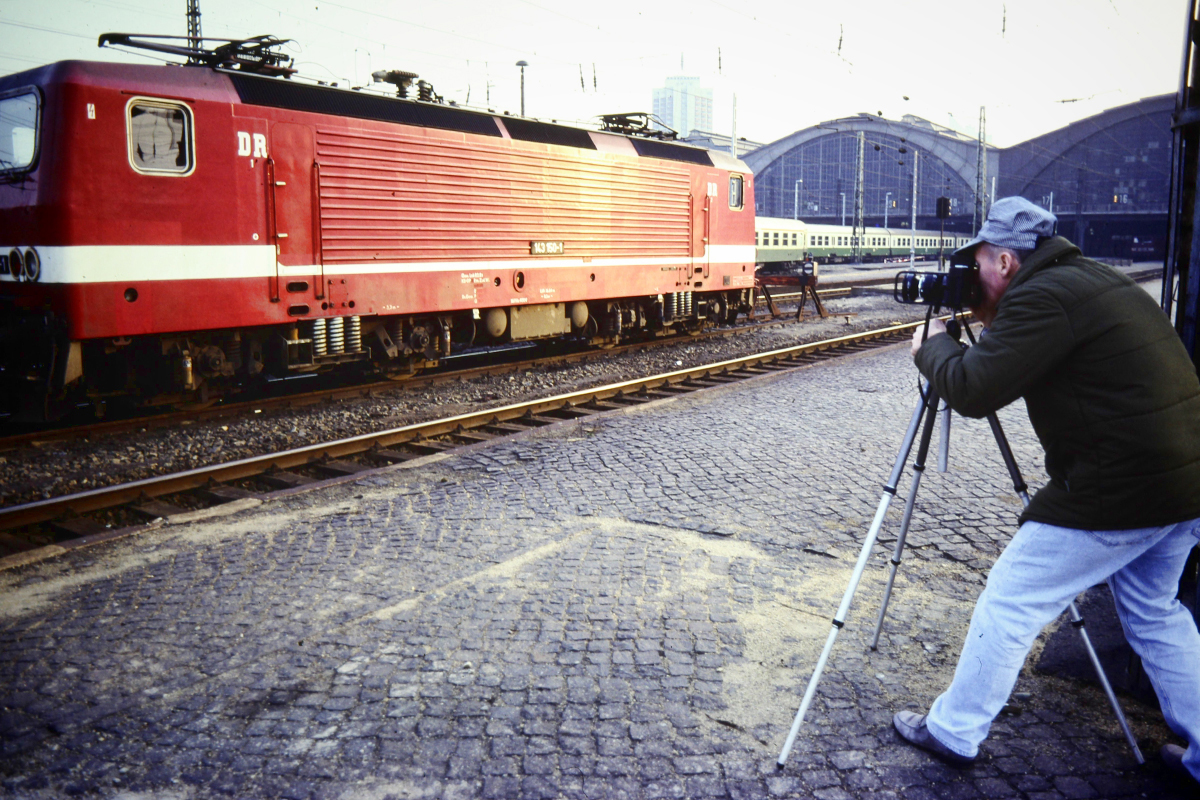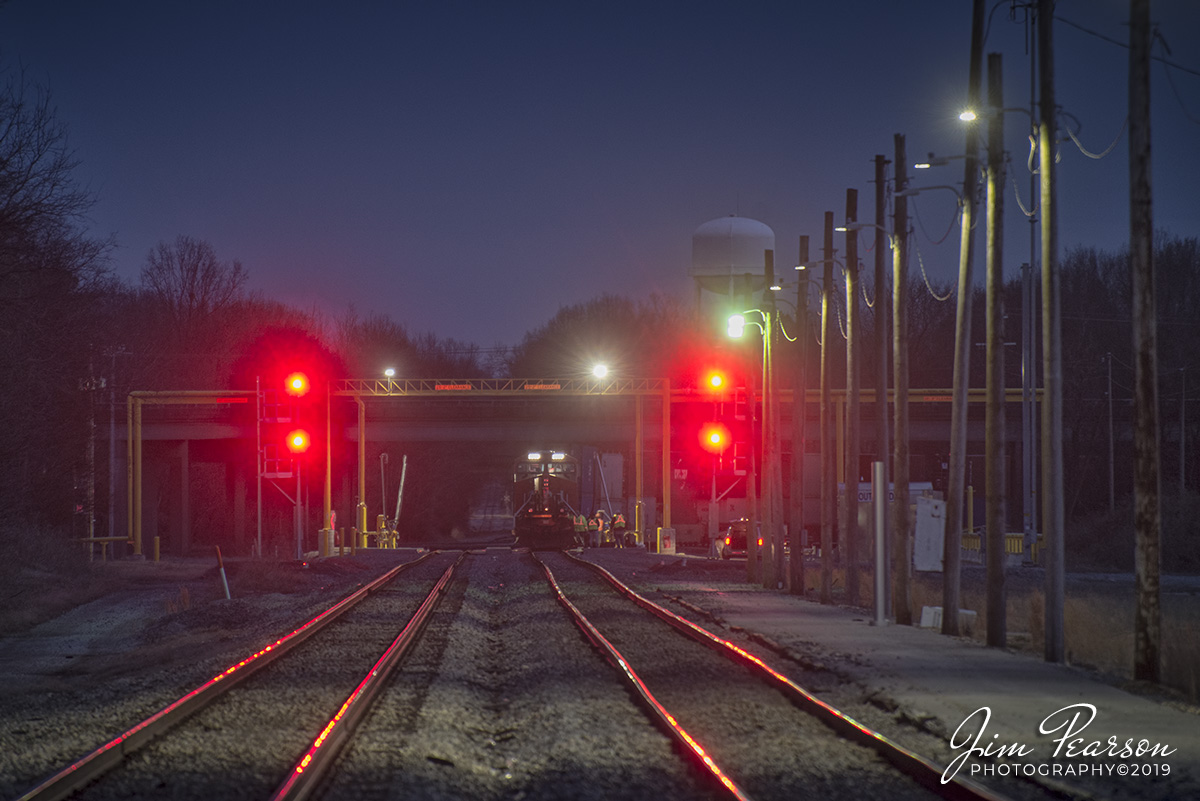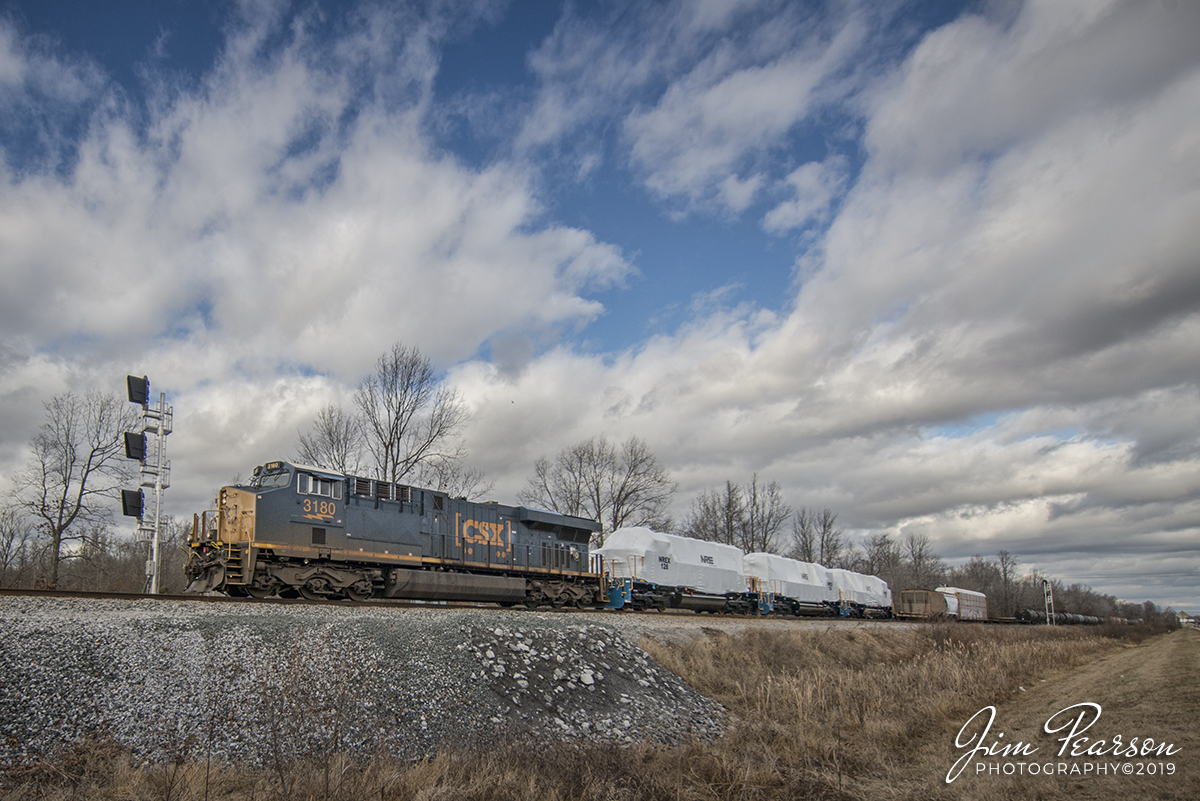January 18, 2020 – Canadian National Ethanol Train CSX K445 heads up the grade at Pembroke, Ky with CN 5654 leading the way as it heads south on the Henderson Subdivision.
CSXT 3096 leads loaded coal train N307…
January 9, 2020 – CSXT 3096 leads loaded coal train N307 as it passes the signals at the RR location known as poorhouse, as it heads south on the Henderson Subdivision at Madisonville, Ky.
This location got it’s name from the L&N Railroad days when the Hopkins County Poorhouse stood near here.
According to the Kentucky Historic Institutions website: In 1910 there were more than 84 thousand paupe… See More
RJ Corman’s Cumberland City local passes the TVA Cumberland power plant…
December 20, 2019 – RJ Corman’s Cumberland City local passes the TVA Cumberland power plant (coal delivered by barge) as it departs Cumberland City, Tennessee on its way back north on the Memphis Line, with RJC 3837 and 3801 leading, after completing its work in Cumberland City for the day.
Paducah and Louisville Railway 2121…
January 15, 2020 – Paducah and Louisville Railway 2121 leads the yard job as it works on moving cars just past the CN crossover in the yard at Paducah, Ky on a foggy morning.
RJ Corman’s Cumberland City turn local…
December 20, 2019 – RJ Corman’s Cumberland City turn local exits the bridge over the Cumberland River as it makes it’s return trip northbound on the Memphis Line at Clarksville, Tennessee with RJC 3801 and 3837 leading with their long noses forward elephant style for their return trip to Guthrie, KY.
It is a Swing through truss bridge and was constructed in 1891 by the Pencoyd Bridge & Construction Company for the Nashville, Chattanooga, and St. Louis Railway. It is still an operating bridge on the river and sees at most two trains a day, but most days only one. Trains head to Cumberland City, TN (SB) usually around 9:30am CST and return north on average about 2:30-3:30pm CST.
RSSX 3021 backs a couple cars into a track at the Kellogg plant in Jackson, Tennessee…
January 1, 2020 – RSSX 3021 backs a couple cars into a track at the Kellogg plant in Jackson, Tennessee as it does it’s work on New Years Day. The unit is leased from Rail Switching Service by the Kellogg Company and from what I can find online is it’s a GP30 that was rebuilt into a LEAF unit and was originally built as DRGW 3021 in February 1963.
According to Wikipedia: The Railserve Leaf is a g… See More
South Central Tennessee Railroad “The Duck River Route”
January 1, 2020 – South Central Tennessee Railroad “The Duck River Route” unit sits reflected in a pool of water next to the West Tennessee Railroad shops in Jackson, Tennessee on a quiet New Years Day.
CSX K443-06 (Chicago to Lawrenceville, GA)…
January 7, 2020 – CSX K443-06 (Chicago to Lawrenceville, GA), a Canadian Pacific loaded ethanol train, passes through the S Curve at Nortonville, Kentucky, with Canadian Pacific 8915, CP 8824 and CSX 5491 as power, as it heads south on the Henderson Subdivision.
Blast From The Past – October 20, 2015 – Cumbres & Toltec Scenic Railroad…
Blast From The Past – October 20, 2015 – Cumbres & Toltec Scenic Railroad Locomotive 484 sits next to the water tower at Chama, New Mexico, after the last day of scheduled revenue runs for the year. Chama is one of my favorite steam operations to photograph!
According to Wikipedia: The Cumbres & Toltec Scenic Railroad, often abbreviated as C&TSRR, is a 3 ft (914 mm) narrow-gauge heritage railroad running for 64 miles (103 km) between Antonito, Colorado and Chama, New Mexico, United States. The railroad gets its name from two geographical features along the route, the 10,015-foot (3,053 m)-high Cumbres Pass and the Toltec Gorge. Originally part of the Denver and Rio Grande Western Railroad’s narrow-gauge network, the line has been jointly owned by the states of Colorado and New Mexico since 1970.
The rail line over which the Cumbres & Toltec operates was constructed in 1881 by the Denver and Rio Grande Western Railroad (D&RGW) as part of their San Juan extension stretching from Alamosa, Colorado to Durango, Colorado. The line was originally built to support mining operations in the San Juan Mountains, mainly around Durango and Silverton. By the mid 20th century, the ore traffic had dwindled but the line continued to support various agricultural and industrial operations until the 1960s.
In 1968, freight traffic was virtually gone and the railroad began the process of abandoning the line. However, the states of Colorado and New Mexico purchased the 64 mile portion between Antonito and Chama in 1970 and began excursion services on the route as the Cumbres & Toltec Scenic Railroad.
The Cumbres & Toltec Scenic Railroad operates between late May and late October with two trains (one in each direction) departing each morning from Antonito and Chama. Both trains are timed to meet at Osier, an old section town located about halfway along the route, for a lunch stop. Afterwards, passengers continue with their train to its destination or switch trains to return to their original terminal. Through riders are returned to their starting place by motorcoach after the train arrives at its destination.
In addition to the through service, the C&TSRR operates various special excursions during the season such as dinner trains. On certain days during the holiday season, the railroad offers special “Santa Trains” from both Chama and Antonito and guests are encouraged to bring gifts and/or food for the less fortunate.
CSX K443-06 (Chicago to Lawrenceville, GA), a Canadian Pacific loaded ethanol train…
January 7, 2020 – CSX K443-06 (Chicago to Lawrenceville, GA), a Canadian Pacific loaded ethanol train, pulls onto the main from the Earlington Cutoff at Mortons Junction, with Canadian Pacific 8915, CP 8824 and CSX 5491 as power, as it heads south on the Henderson Subdivision at Mortons Gap, Ky.
On a very quiet New Years Day I waited and waited and…
January 1, 2020 – On a very quiet New Years Day I waited and waited and waited and waited and a train never appeared for this picture from a grade crossing around Gibson, Tennessee on the CSX Memphis Subdivision. Sometimes it happens, but the scene makes for a nice shot at 600mm!! I’ll revisit this spot with my long lens on a day there’s regular traffic for sure! Remember, there doesn’t always have to be a train to come back with a great picture!
Digital Art – West Tennessee Railroad
From time to time I’m going to do a Digital Art Piece of some of my work. This one is of a string on power as it sits next to the engine house at the West Tennessee Railroad in Jackson, Tennessee. These pieces are for sale at my normal prices via my online sales store! Something different for the railroad enthusiast.
It’s available for purchase here: https://fineartamerica.com/featured/digital-art-west-tennessee-railroad-jim-pearson.html?newartwork=true
Union Pacific 4014 “Big Boy” locomotive releases built up steam…
November 13, 2019 – Union Pacific 4014 “Big Boy” locomotive releases built up steam as it sits at the station in Prescott, Arkansas, waiting for time to depart north on UP’s Little Rock Subdivision during UP’s Great Race Across the Southwest steam tour.
According to Wikipedia: Union Pacific 4014 is a four-cylinder simple articulated 4-8-8-4 Big Boy-type steam locomotive owned and operated by the Union Pacific Railroad. Built in 1941 by the American Locomotive Company (ALCO) of Schenectady, New York, No. 4014 is the only operating Big Boy of the eight that remain in existence.
The locomotive operated in revenue service until 1959. It was donated to the Railway and Locomotive Historical Society in late 1961 and thereafter displayed in Fairplex in Pomona, California. In 2013, Union Pacific re-acquired the locomotive and launched a restoration project at their Steam Shop in Cheyenne, Wyoming.[citation needed] In 2019, No. 4014 was operated for the first time after it sat dormant for almost six decades. Part of Union Pacific’s heritage fleet, it now operates in excursion service, in addition to hauling revenue freight during ferry moves.
CSX K443-06 (Chicago to Lawrenceville, GA), a Canadian Pacific loaded ethanol train…
January 7, 2020 – CSX K443-06 (Chicago to Lawrenceville, GA), a Canadian Pacific loaded ethanol train, passes through the south end of Slaughters, Kentucky, with Canadian Pacific 8915, CP 8824 and CSX 5491 as power, as it heads south on the Henderson Subdivision. A big shoutout to Andrew Williams for the heads up on this southbound!!
South Central Tennessee Railroad “The Duck River Route”…
January 1, 2020 – South Central Tennessee Railroad “The Duck River Route” unit sits next to the West Tennessee Railroad shops at Jackson, Tennessee on a quiet New Years Day.
CSX intermodal Q155 crosses over the West Tennessee Railroad…
January 1, 2020 – CSX intermodal Q155 crosses over the West Tennessee Railroad at the diamond in Milan, Tennessee as it makes its way north on the CSX Memphis Subdivision with CSXT 5393 & 5208 leading.
RJ Corman’s Cumberland City turn…
December 20, 2019 – RJ Corman’s Cumberland City turn local exits Palmyra Railroad Tunnel as it makes it’s return trip northbound on the Memphis Line at Palmyra, Tennessee with RJC 3801 and 3837 leading with their long noses forward elephant style for their return trip to Guthrie, Ky.
Palmyra is a very small town southwest of Clarksville, TN and from what I can find the tunnel is about 800-1000 ft. long.
The Memphis line follows the Cumberland River between Clarksville and Cumberland City and here at Palmyra, there is a large bluff overlooking the river which required a tunnel to be blasted through it.
The line was originally built by the Memphis, Clarksville & Louisville Railroad (MC& L) which eventually became part of L&N.
A string on power sits next to the engine house…
January 1, 2020 – A string on power sits next to the engine house at the West Tennessee Railroad engine house at their yard in Jackson, Tennessee on a very quiet New Years Day. From front to back are, 3576, 7855, 3560 and SCTR 483 (The Duck River Route).
According to Wikipedia: The West Tennessee Railroad (reporting mark WTNN) is a shortline railroad in the Southern U.S., connecting Corinth, Mississippi, to Fulton, Kentucky, via western Tennessee. The company began operating in 1984 on a portion of the former Mobile and Ohio Railroad (M&O) main line between Jackson and Kenton, Tennessee.
It significantly expanded operations in 2001 through the lease, from the Norfolk Southern Railway, of the ex-M&O south to Corinth and a former main line of the Illinois Central Railroad (IC) north to Fulton, as well as a branch from Jackson to Poplar Corner (ex-Birmingham and Northwestern Railway, acquired by the Gulf, Mobile and Northern Railroad in 1924).
All of these lines were part of the Illinois Central Gulf Railroad (ICG) prior to its 1980s program of spin-offs, during which Gibson County purchased the Jackson-Kenton line and the Southern Railway acquired the Corinth-Fulton line and Poplar Corner branch.
The company is under common control with the South Central Tennessee Railroad and the Tennken Railroad. Its main line was upgraded as part of the MidAmerica Corridor, an initiative by the Canadian National Railway and Norfolk Southern Railway to improve rail service between Illinois and the Southeast.
The Mobile and Ohio Railroad completed a line between Mobile, Alabama, and Columbus, Kentucky, in 1861, and the Mississippi Central Railroad, an Illinois Central Railroad predecessor, completed its north-south line between New Orleans, Louisiana and Cairo, Illinois in 1873. The Birmingham and Northwestern Railway opened a line between Jackson, where the M&O and IC lines crossed, and Dyersburg in 1912 and was purchased by the Gulf, Mobile and Northern Railroad in 1924. Through mergers, all of these lines became part of the Illinois Central Gulf Railroad in 1972.
The Gibson County Railroad Authority acquired the line between Jackson and Kenton in August 1984, and the new West Tennessee Railroad began operations in October that same year.[5] The Southern Railway bought the Corinth-Jackson-Fulton and Jackson-Poplar Corner lines from the ICG in June 1988,[6] and in August 2001 the Norfolk Southern Railway, successor to the Southern, leased them to WTNN. (The Southern also acquired the ICG’s line southeast to Haleyville, Alabama, and trackage rights from Fulton north to Centralia, Illinois, and NS sold the former, where not abandoned, to the Redmont Railway in 1995.)
Blast From The Past – Fall 1992 – A shot of me doing what I love…
Blast From The Past – Fall 1992 – A shot of me doing what I love at the main train station in Lepzig, East Germany during an photo assignment in the area after the fall of the Eastern Block walls and fences. Here I’m shooting with a Fuji 6X17cm panoramic 120 film camera. Photo was shot by my good friend Jose Lopez Jr.
I spent New Years Day trackside between the CN at Fulton, Ky the CSX Memphis Subdivision and…
January 1, 2020 – I spent New Years Day trackside between the CN at Fulton, Ky the CSX Memphis Subdivision and the West Tennessee Railroad (WTRR) in Jackson, Tennessee yesterday with good friend and fellow photographer Ryan Scott of IndianaRails! We had a great trip and although moving trains were pretty scarice, we had the good fortune of catching a few nice gems and knocking this shortline off our bucket list.
We both plan on returning to chase the WTRR between Jackson and Fulton, now that we kinda have a better feel for where things are at! A big shout out to all the folks that gave us suggestions along the way! It’s folks like you that help make this passion so much fun!
This photograph is of a CN intermodal as it takes on fuel at late dusk at Fulton, Kentucky before continuing on it’s northbound trip on the Cario Subdivision. It was shot from a crossing with my Nikkor 70-300mm lens at 300mm. ISO was 1,000, exposure was 1/4 second at f/5.6 on a tripod. This is also just north of the Amtrak station in Fulton and so the platform helped nicely with its lighting.
CSXT 3180 leads Q501-29 with NREX (National Railway Equipment) 126, 127 & 128 trailing…
December 30, 3019 – CSXT 3180 leads Q501-29 with NREX (National Railway Equipment) 126, 127 & 128 trailing behind under wraps as it pulls away from the siding at Romney in Nortonville, KY as it heads south on the Henderson Subdivision. I’ve not been able to determine who the units are for so if anyone knows I’d appreciate if you’d leave it in the comments!
According to Wikipedia: National Railway Equipment Company (reporting mark NREX) is an American railroad equipment rebuilding, leasing, and manufacturing company, headquartered in Mt. Vernon, Illinois. NREC sells new and rebuilt locomotives to railroad companies worldwide, with an emphasis on the North American market.

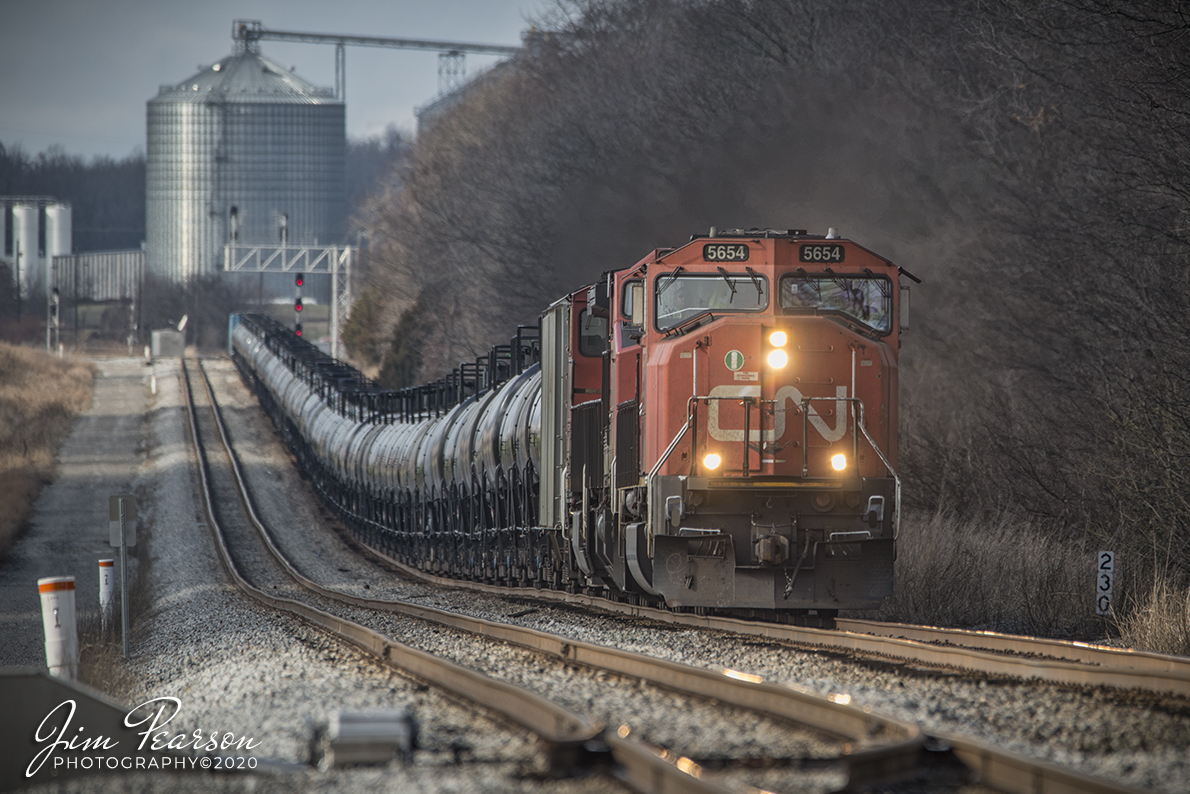
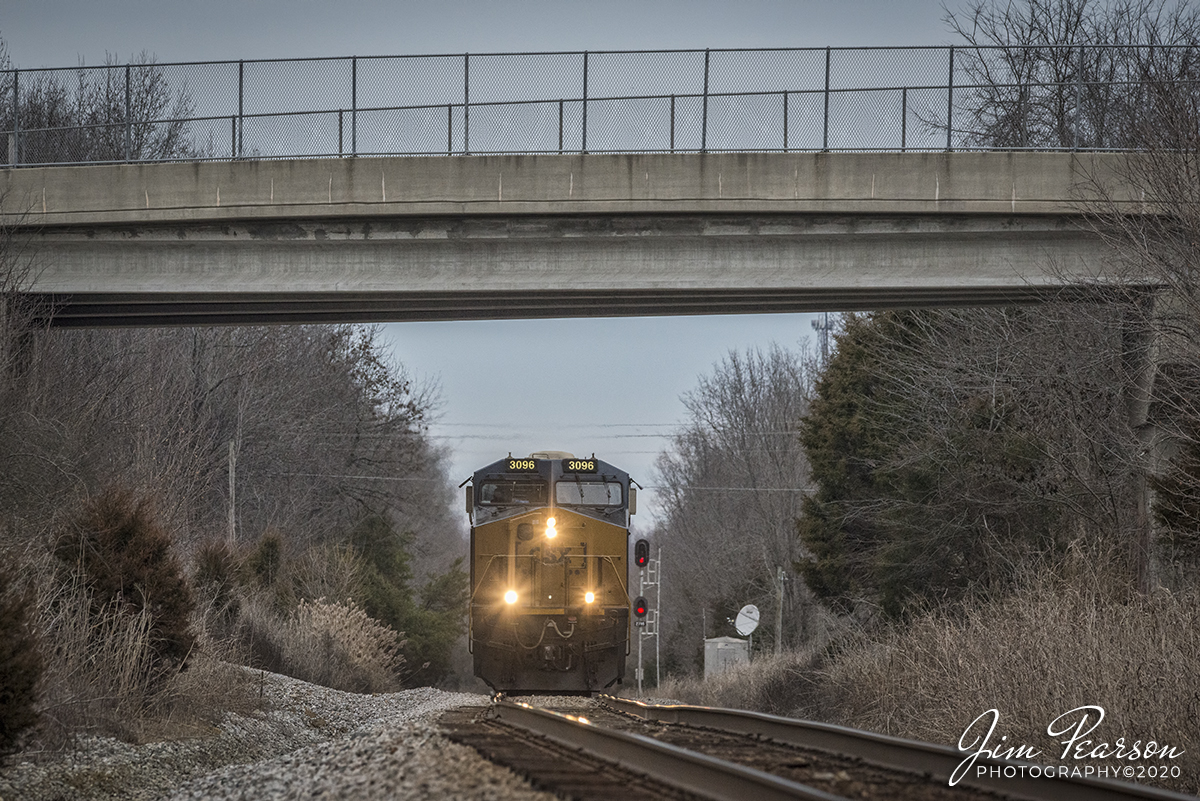
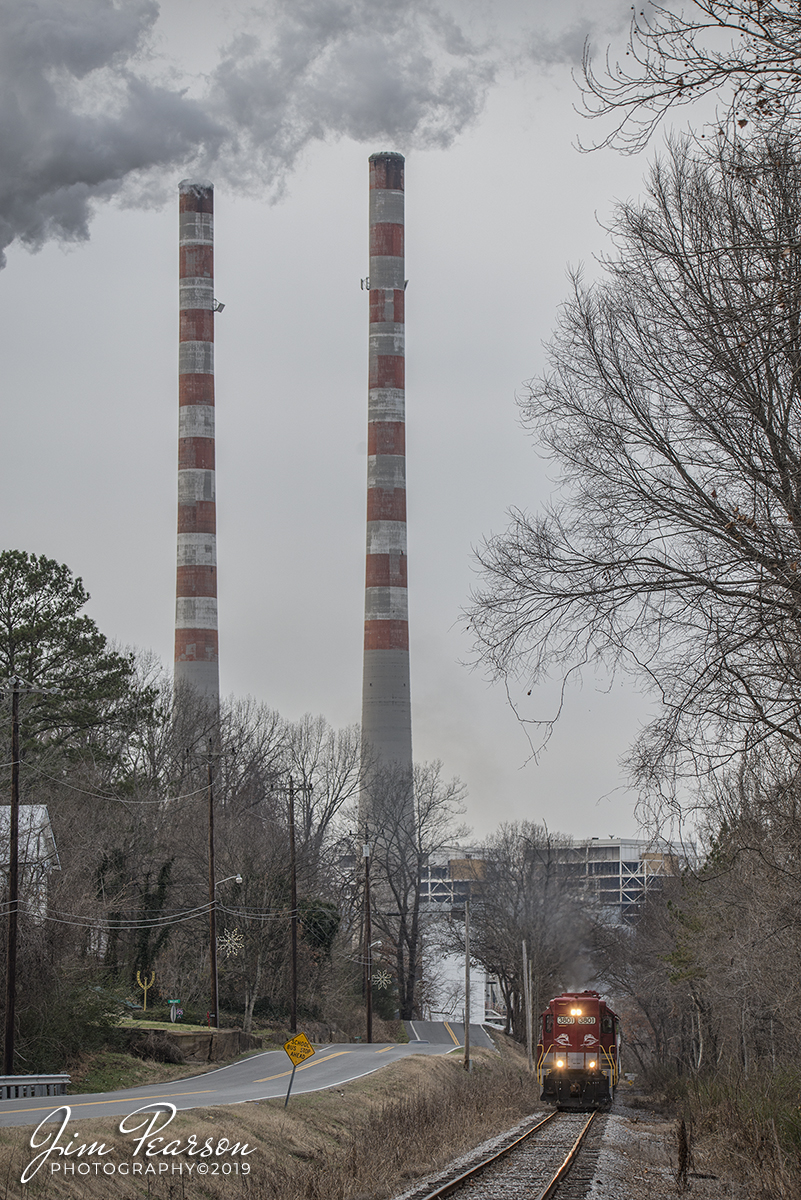
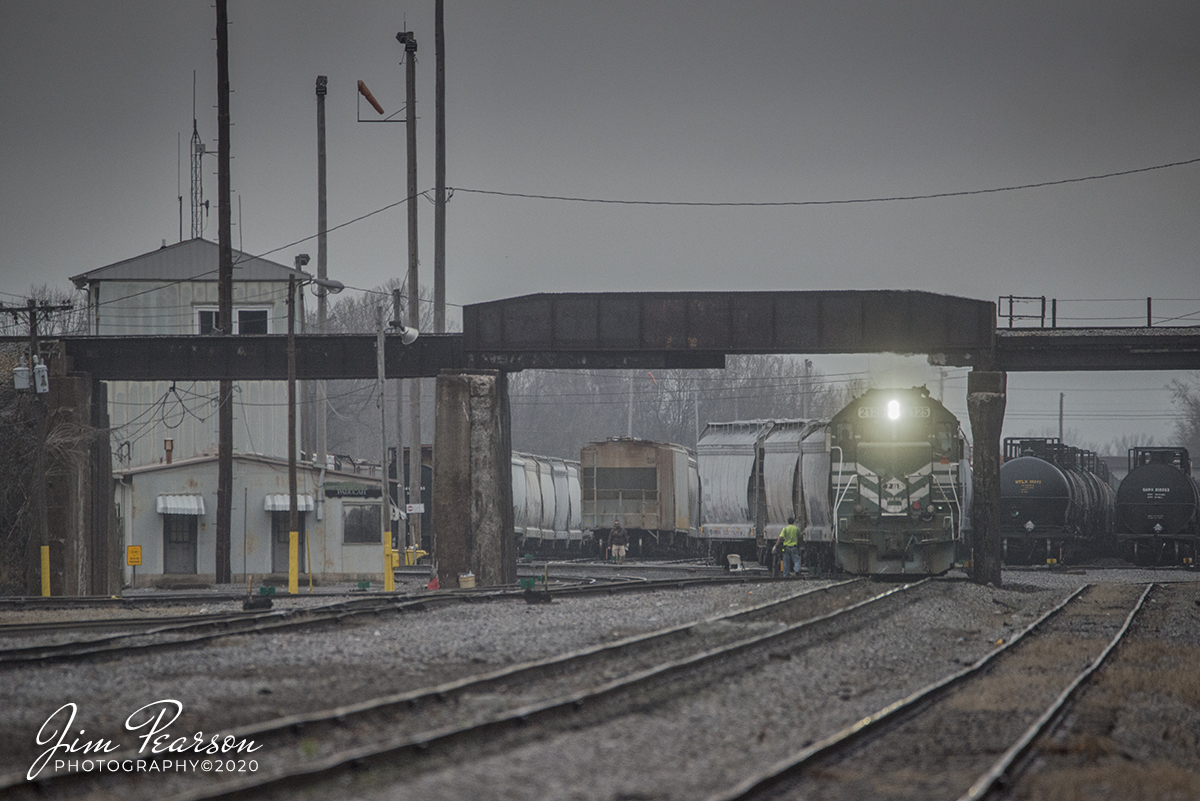
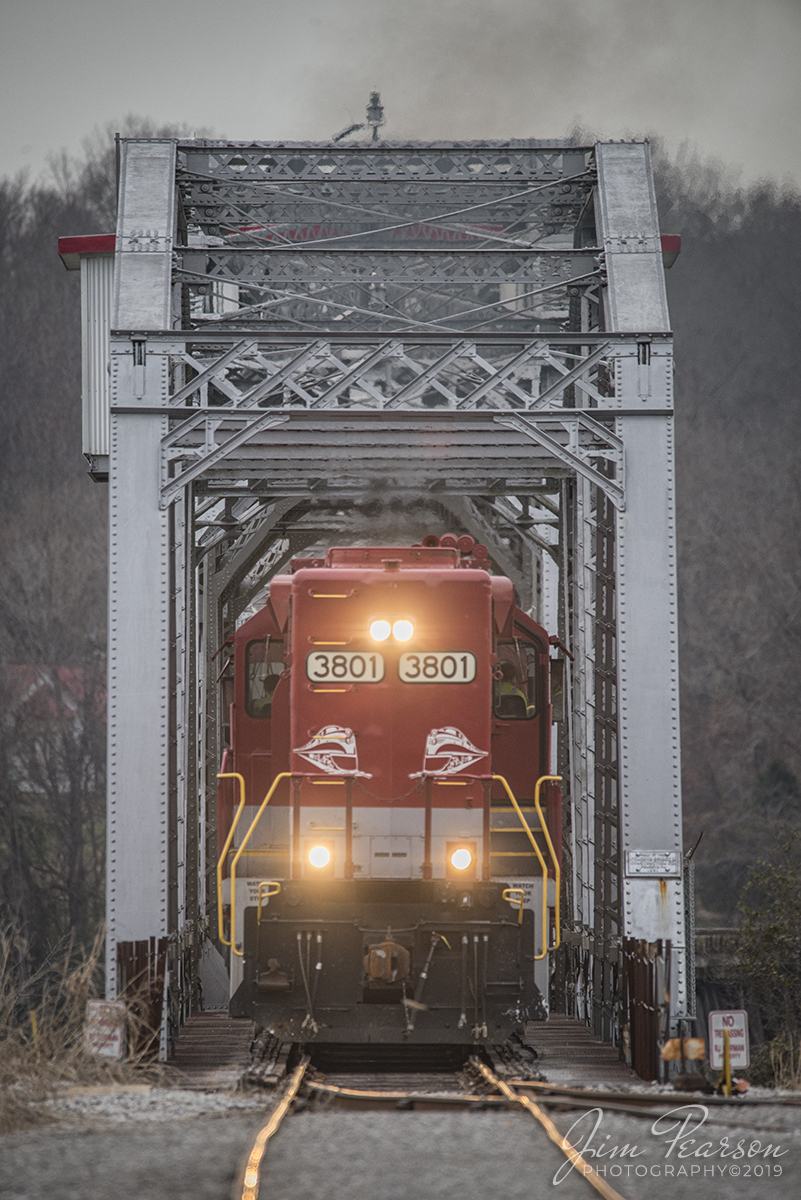
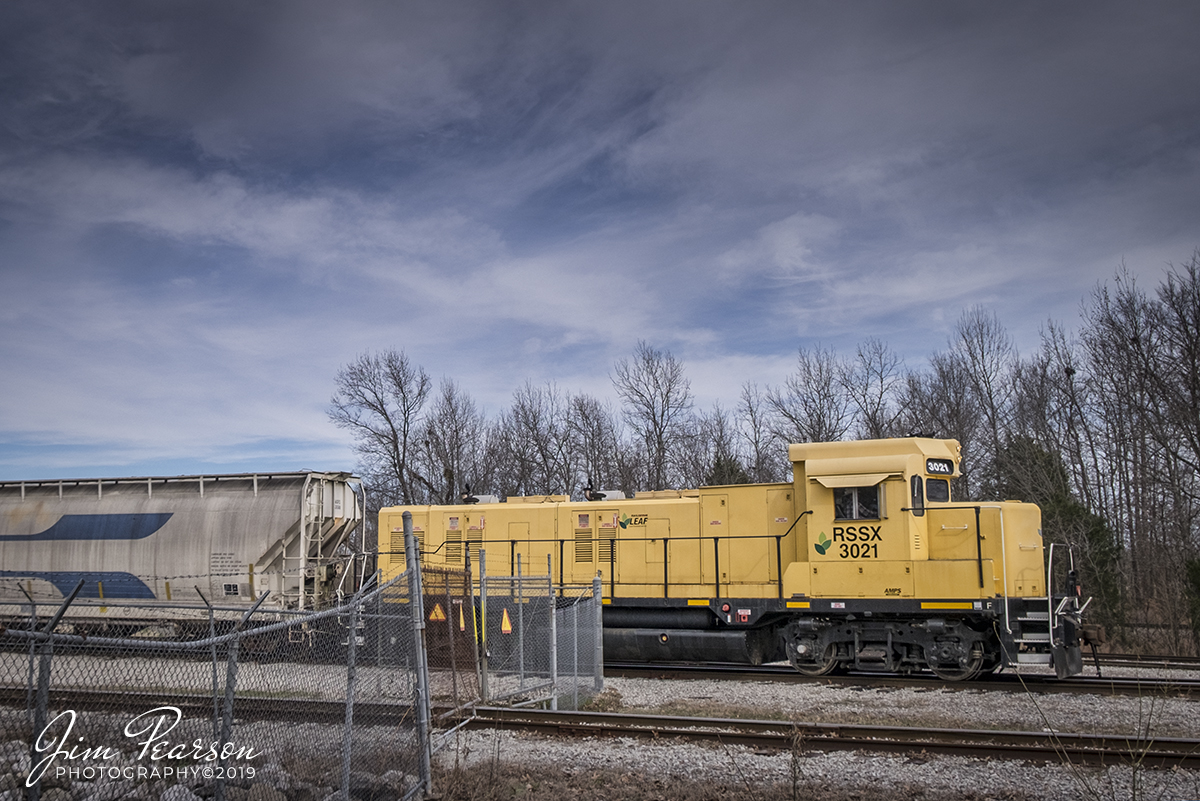
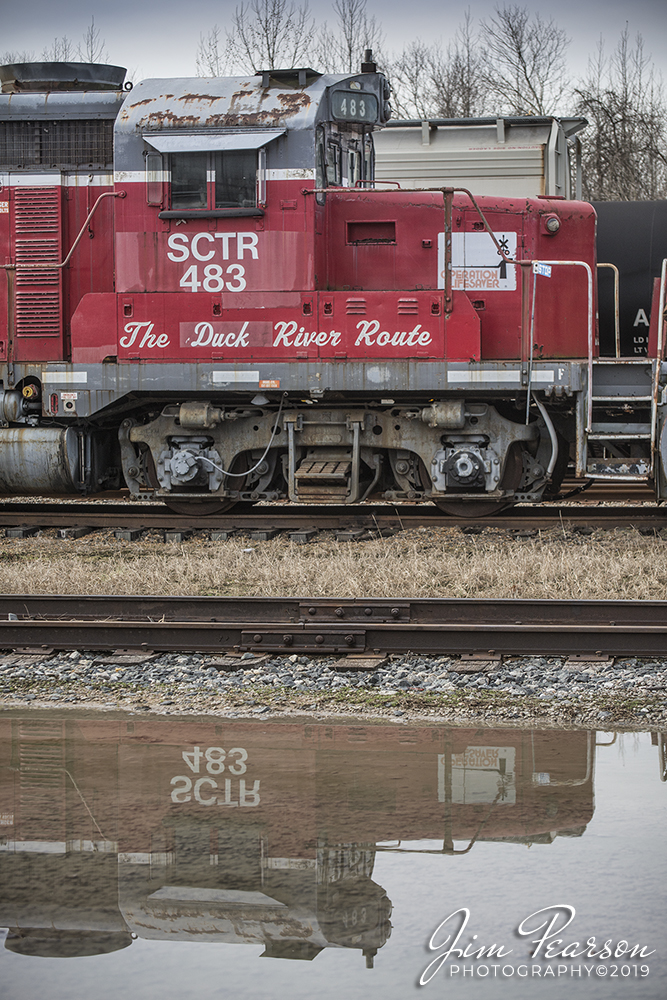
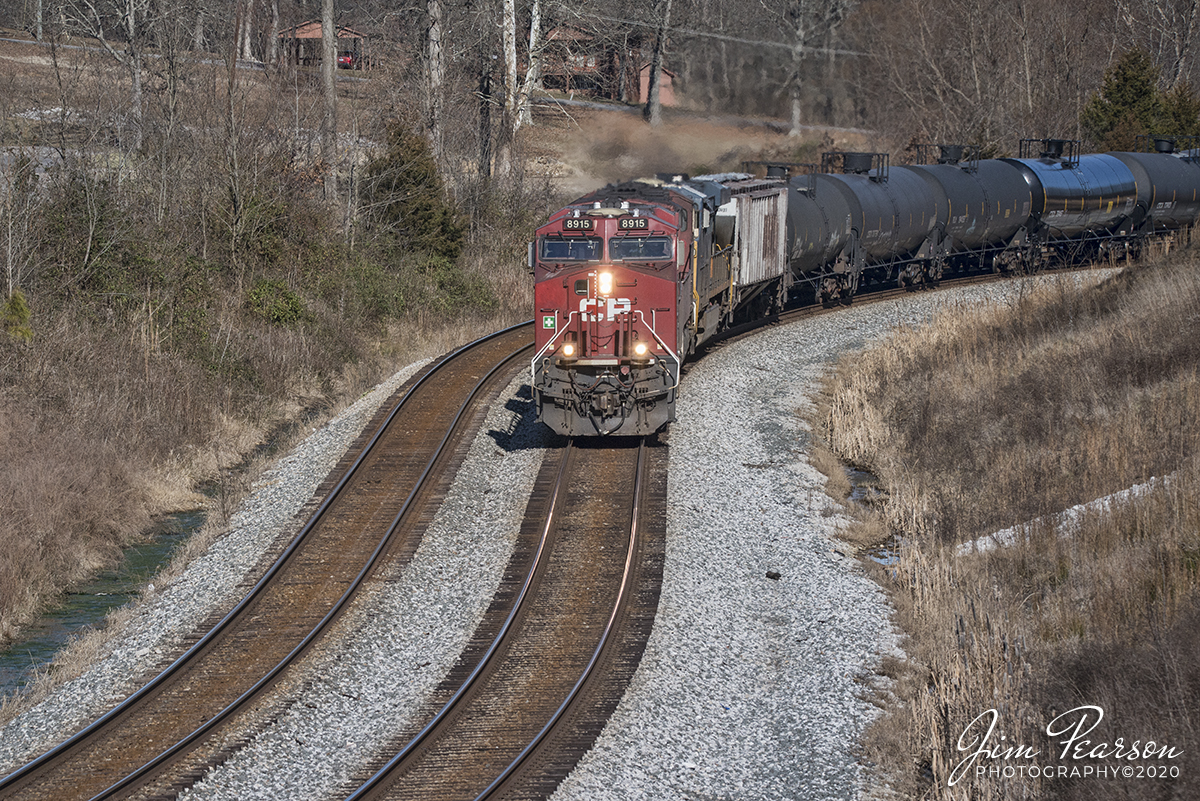
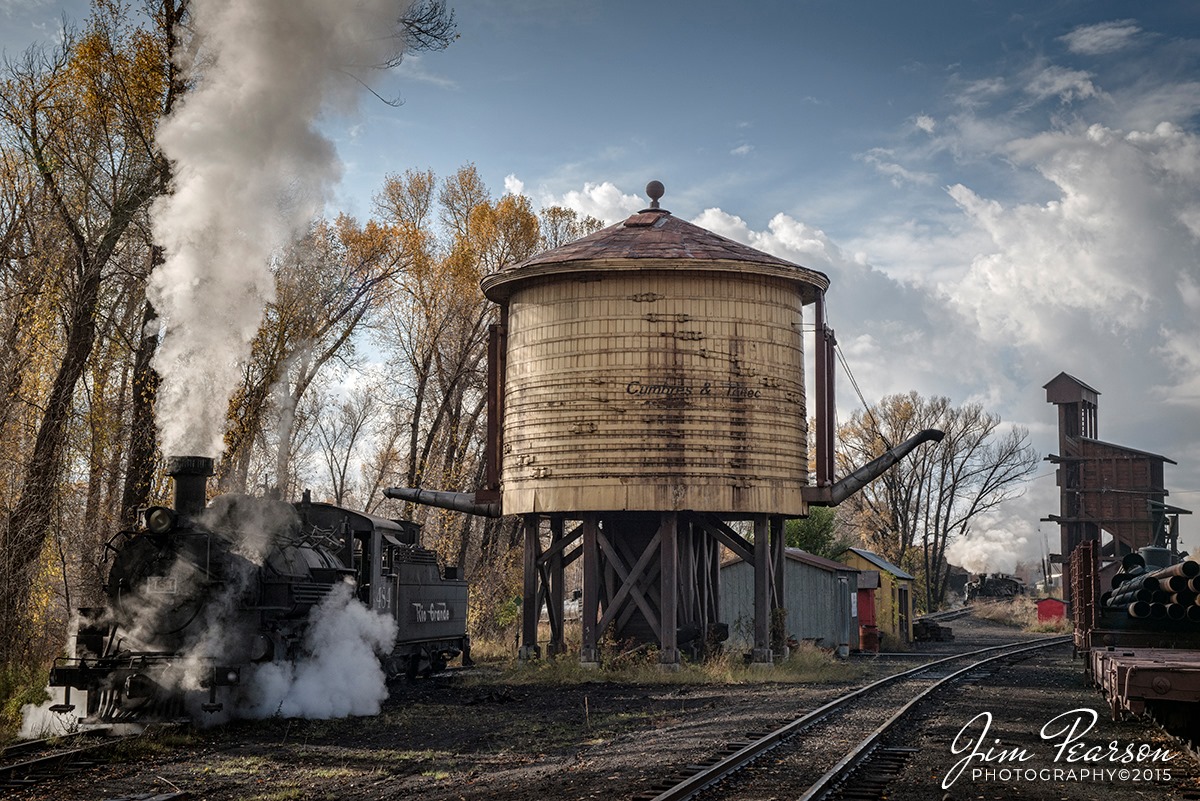
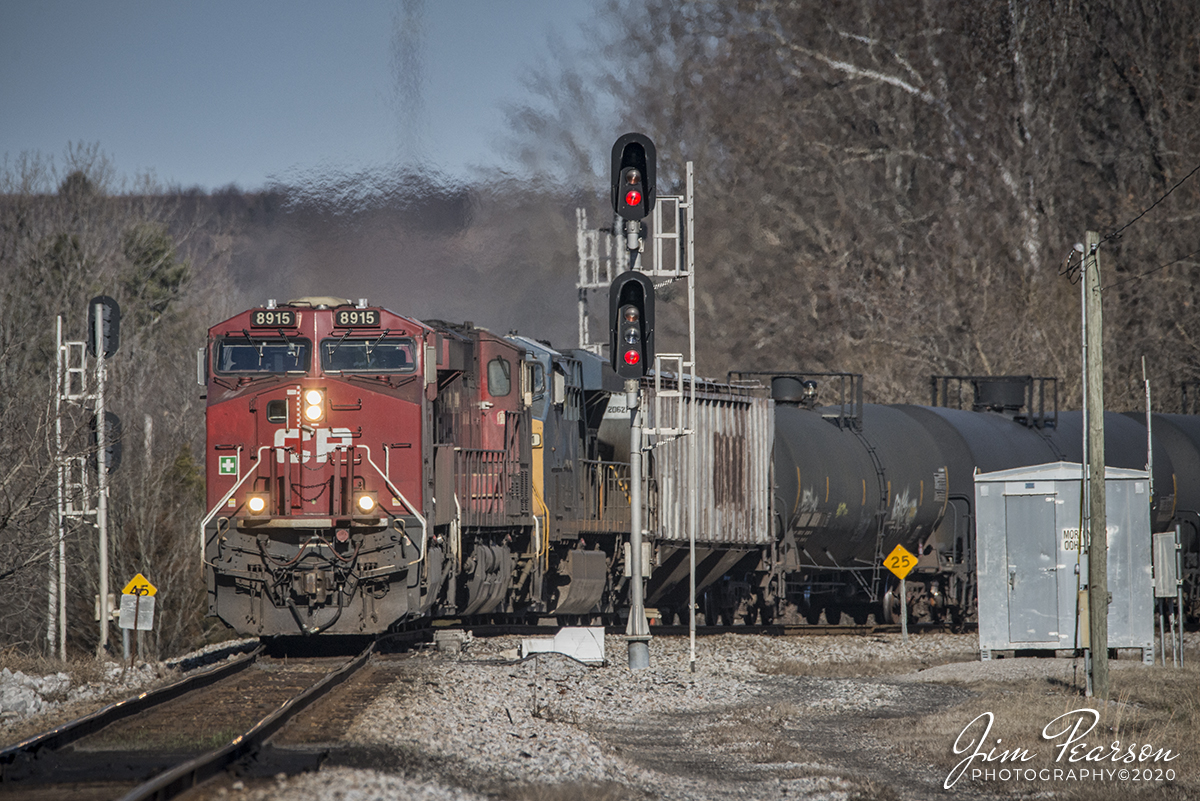
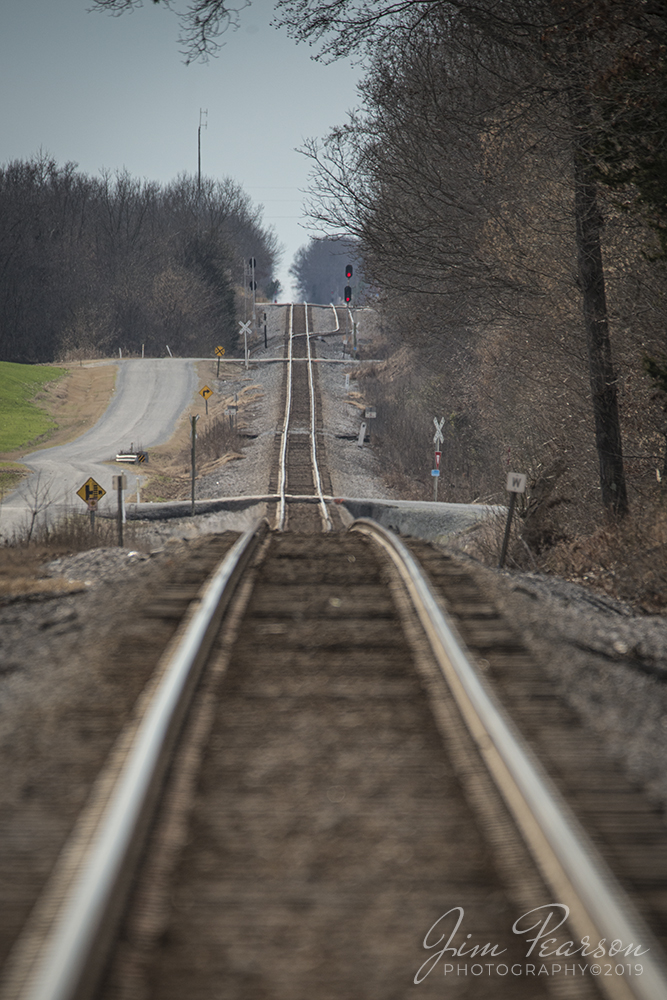
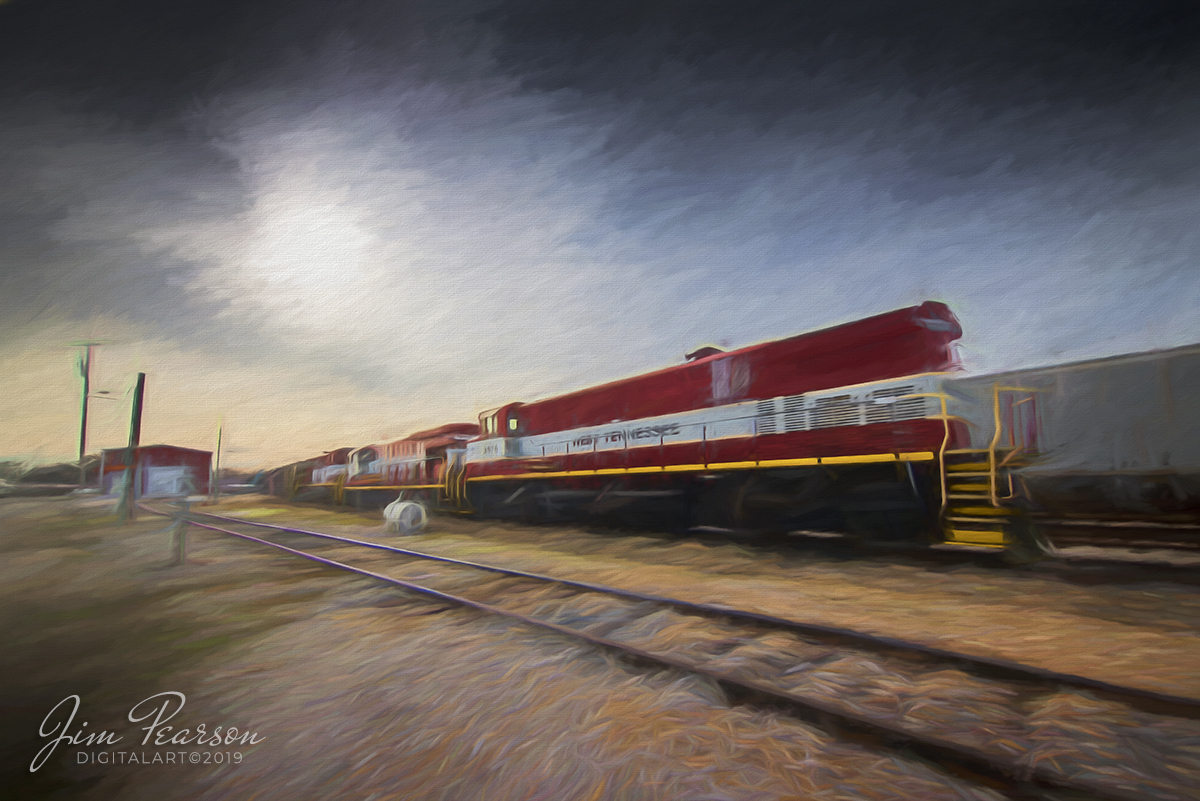
![November 13, 2019 - Union Pacific 4014 "Big Boy" locomotive releases built up steam as it sits at the station in Prescott, Arkansas, waiting for time to depart north on UP's Little Rock Subdivision during UP's Great Race Across the Southwest steam tour.
According to Wikipedia: Union Pacific 4014 is a four-cylinder simple articulated 4-8-8-4 Big Boy-type steam locomotive owned and operated by the Union Pacific Railroad. Built in 1941 by the American Locomotive Company (ALCO) of Schenectady, New York, No. 4014 is the only operating Big Boy of the eight that remain in existence.
The locomotive operated in revenue service until 1959. It was donated to the Railway and Locomotive Historical Society in late 1961 and thereafter displayed in Fairplex in Pomona, California. In 2013, Union Pacific re-acquired the locomotive and launched a restoration project at their Steam Shop in Cheyenne, Wyoming.[citation needed] In 2019, No. 4014 was operated for the first time after it sat dormant for almost six decades. Part of Union Pacific's heritage fleet, it now operates in excursion service, in addition to hauling revenue freight during ferry moves.](http://www.jimpearsonphotography.com/wp-content/uploads/2020/01/WEB-11.13.19-UP-4014-Lets-off-Steam-at-Prescott-AR.jpg)
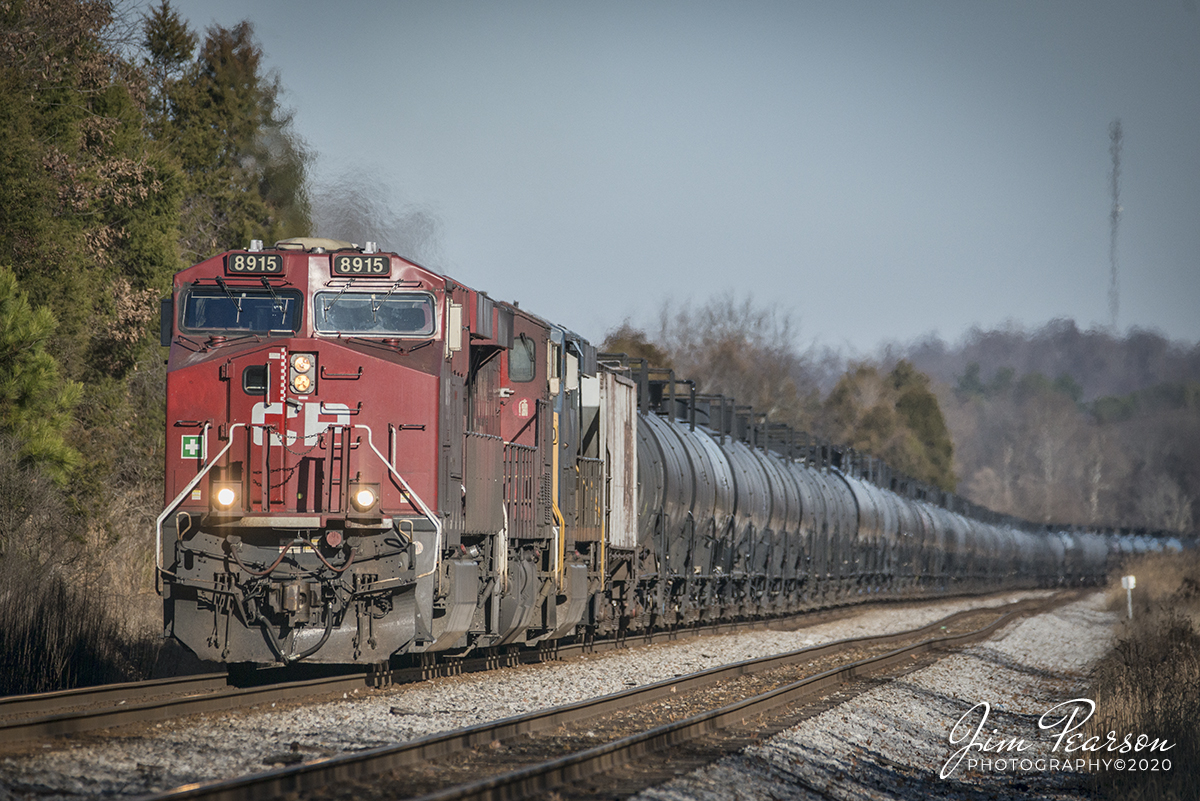
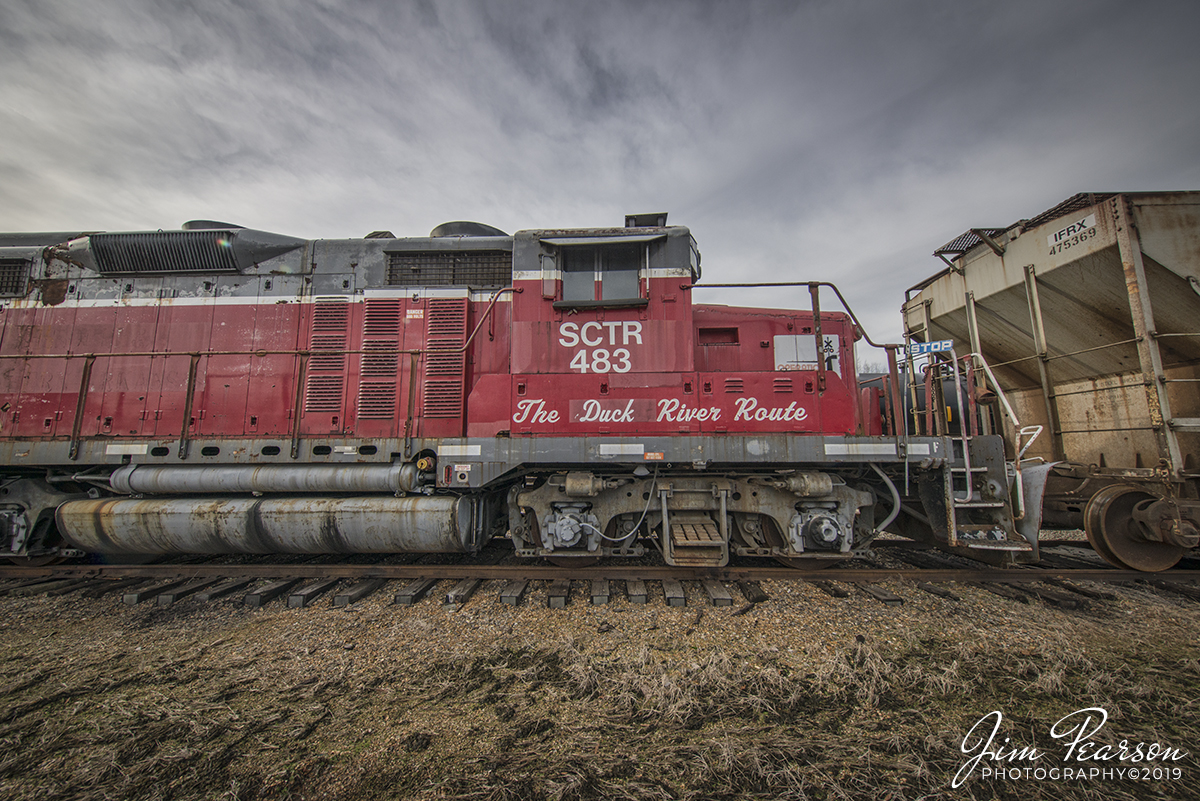
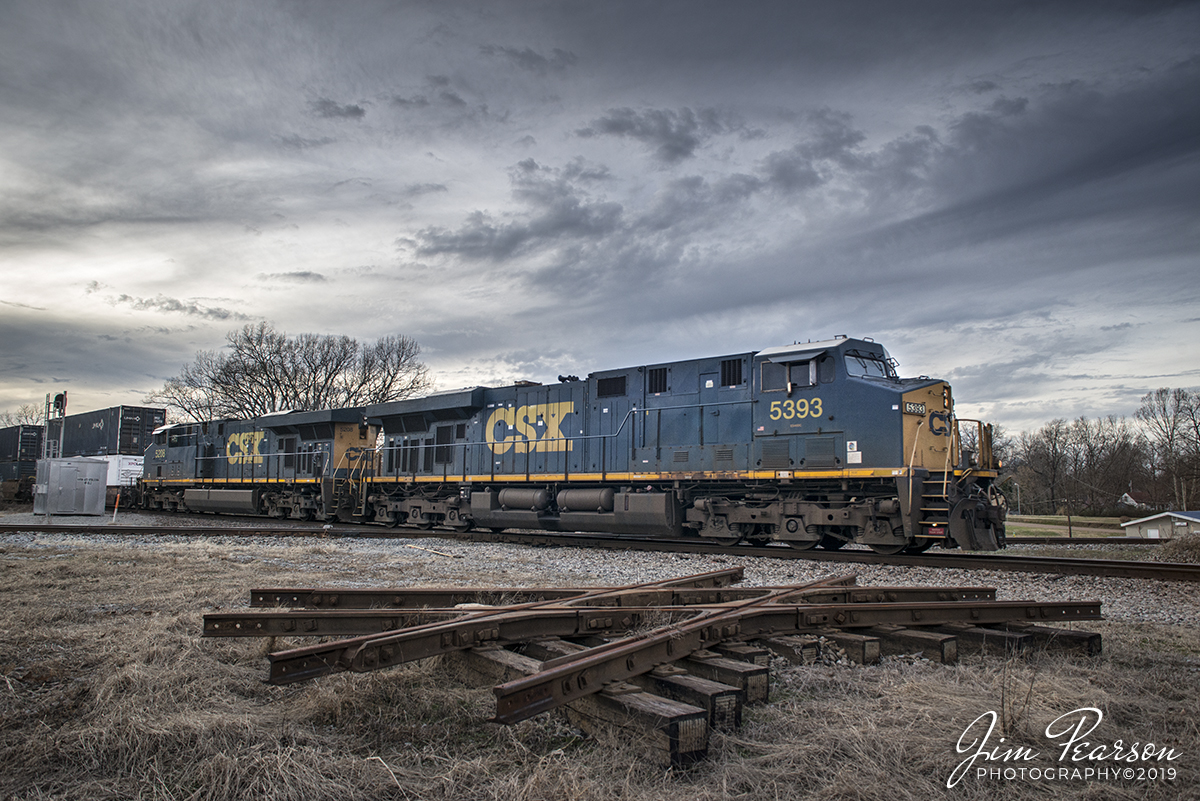
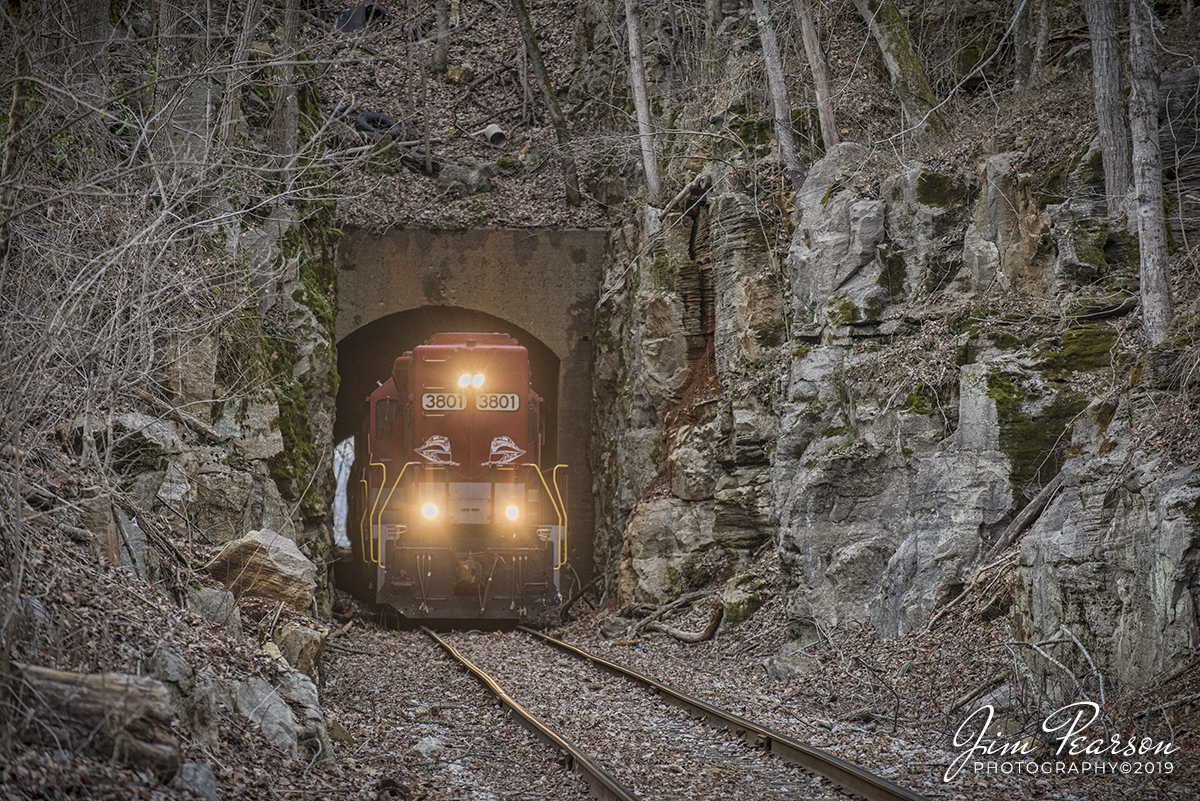
![January 1, 2020 - A string on power sits next to the engine house at the West Tennessee Railroad engine house at their yard in Jackson, Tennessee on a very quiet New Years Day. From front to back are, 3576, 7855, 3560 and SCTR 483 (The Duck River Route).
According to Wikipedia: The West Tennessee Railroad (reporting mark WTNN) is a shortline railroad in the Southern U.S., connecting Corinth, Mississippi, to Fulton, Kentucky, via western Tennessee. The company began operating in 1984 on a portion of the former Mobile and Ohio Railroad (M&O) main line between Jackson and Kenton, Tennessee.
It significantly expanded operations in 2001 through the lease, from the Norfolk Southern Railway, of the ex-M&O south to Corinth and a former main line of the Illinois Central Railroad (IC) north to Fulton, as well as a branch from Jackson to Poplar Corner (ex-Birmingham and Northwestern Railway, acquired by the Gulf, Mobile and Northern Railroad in 1924).
All of these lines were part of the Illinois Central Gulf Railroad (ICG) prior to its 1980s program of spin-offs, during which Gibson County purchased the Jackson-Kenton line and the Southern Railway acquired the Corinth-Fulton line and Poplar Corner branch.
The company is under common control with the South Central Tennessee Railroad and the Tennken Railroad. Its main line was upgraded as part of the MidAmerica Corridor, an initiative by the Canadian National Railway and Norfolk Southern Railway to improve rail service between Illinois and the Southeast.
The Mobile and Ohio Railroad completed a line between Mobile, Alabama, and Columbus, Kentucky, in 1861, and the Mississippi Central Railroad, an Illinois Central Railroad predecessor, completed its north-south line between New Orleans, Louisiana and Cairo, Illinois in 1873. The Birmingham and Northwestern Railway opened a line between Jackson, where the M&O and IC lines crossed, and Dyersburg in 1912 and was purchased by the Gulf, Mobile and Northern Railroad in 1924. Through mergers, all of these lines became part of the Illinois Central Gulf Railroad in 1972.
The Gibson County Railroad Authority acquired the line between Jackson and Kenton in August 1984, and the new West Tennessee Railroad began operations in October that same year.[5] The Southern Railway bought the Corinth-Jackson-Fulton and Jackson-Poplar Corner lines from the ICG in June 1988,[6] and in August 2001 the Norfolk Southern Railway, successor to the Southern, leased them to WTNN. (The Southern also acquired the ICG's line southeast to Haleyville, Alabama, and trackage rights from Fulton north to Centralia, Illinois, and NS sold the former, where not abandoned, to the Redmont Railway in 1995.)](http://www.jimpearsonphotography.com/wp-content/uploads/2020/01/WEB-01.01.20-WTRR-Power-in-yard-at-Jackson-TN.jpg)
